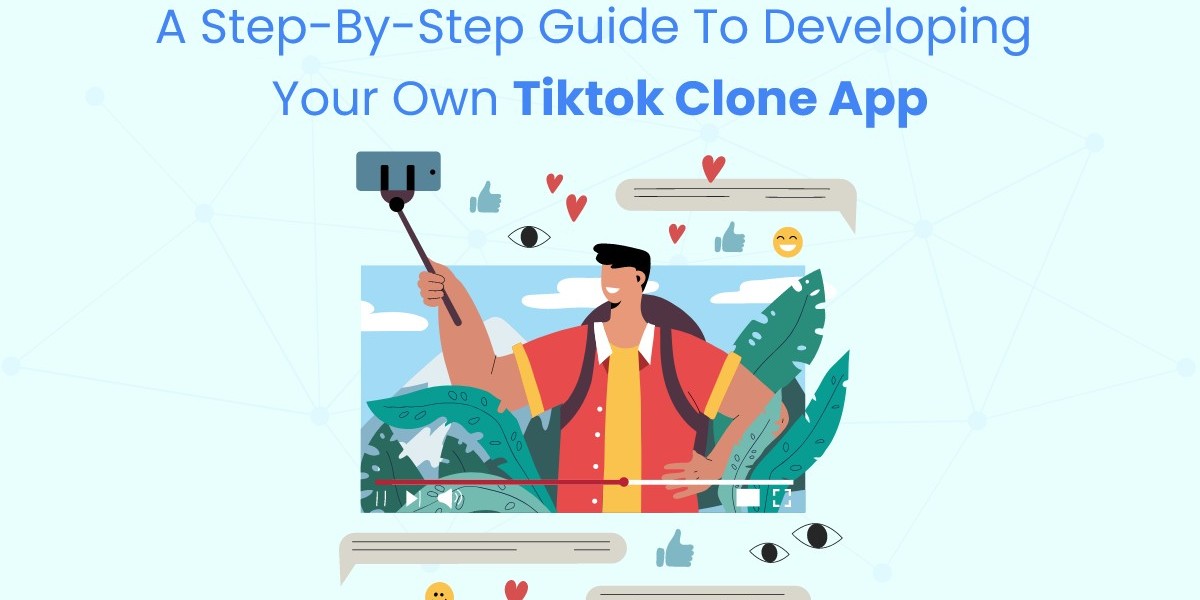Developing your own TikTok clone app can be a lucrative venture, given the immense popularity and user engagement of the original platform. If you're aiming to tap into the social video-sharing market, follow this step-by-step guide to create a successful TikTok clone app.
Step 1: Identify Your Niche and Define Unique Features
Before diving into development, it’s essential to identify your niche and define the unique features that will set your app apart from TikTok. Consider targeting a specific audience or incorporating distinctive functionalities. For instance, you might focus on educational content, local community videos, or a specific interest group like fitness enthusiasts. This differentiation will help attract a dedicated user base.
Step 2: Conduct Market Research
Understanding your target audience is crucial. Conduct thorough market research to analyze your potential users’ preferences and behaviors. Look at successful features on TikTok and other video-sharing apps to see what resonates most with users. Use this data to create a detailed project plan, outlining your app’s core features, user interface (UI), and user experience (UX) design.
Step 3: Choose the Right Technology Stack
Selecting the appropriate technology stack is vital for your app’s performance, scalability, and future growth. Your choice will depend on factors like your budget, timeline, and the platforms you want to support (iOS, Android, or both). Here’s a basic guide to choosing your tech stack:
- Frontend Development: Use Swift for iOS and Kotlin for Android, or consider cross-platform solutions like React Native or Flutter for faster development.
- Backend Development: Node.js, Django, or Ruby on Rails are popular choices. Ensure your backend can handle real-time data processing and large file uploads.
- Database: Use scalable databases like MongoDB or Firebase to manage user data efficiently.
- Cloud Storage: AWS S3 or Google Cloud Storage can be used for storing and retrieving video content.
Step 4: Develop Core Features
Now, it’s time to start developing the core features of your TikTok clone app. Focus on the following essential functionalities:
- User Profiles: Enable users to create profiles, upload profile pictures, and add bio information.
- Video Upload and Editing: Allow users to record, upload, and edit videos. Integrate features like filters, effects, music tracks, and AR stickers to enhance the videos.
- Feed and Discovery: Implement a personalized feed based on user interests and behaviors. Create a discovery section to showcase trending and relevant content.
- Social Interactions: Include features like likes, comments, shares, and direct messaging to foster community interaction and engagement.
- Push Notifications: Notify users about new followers, likes, comments, and trending videos to keep them engaged with your app.
- Monetization Options: Consider integrating in-app purchases, subscriptions, or advertisements to monetize your app effectively.
Step 5: Test, Launch, and Market Your App
Once development is complete, thoroughly test your app to ensure it works seamlessly across different devices and operating systems. Conduct beta testing with a small group of users to gather feedback and make necessary improvements.
Pre-Launch Marketing
Prepare a marketing strategy to create buzz around your app launch. Utilize social media, influencer partnerships, and app store optimization (ASO) to reach your target audience.
Launch Your App
When you’re confident in your app’s functionality and stability, launch it on the App Store and Google Play. Monitor user feedback and app performance closely to identify any issues that need immediate attention.
Post-Launch Iteration
After launch, continue to gather user feedback and analyze app usage data. Regularly update your app with new features, bug fixes, and performance improvements to keep users engaged and attract new users.
Conclusion
Developing a TikTok clone app involves careful planning, strategic execution, and continuous iteration. By identifying your niche, conducting thorough market research, choosing the right technology stack, developing essential features, and effectively marketing your app, you can create a successful video-sharing platform that resonates with users.
Stay adaptable to user preferences and industry trends, and continually innovate to maintain a competitive edge. With dedication and the right approach, your TikTok clone app can carve out its niche and thrive in the dynamic world of social media.


